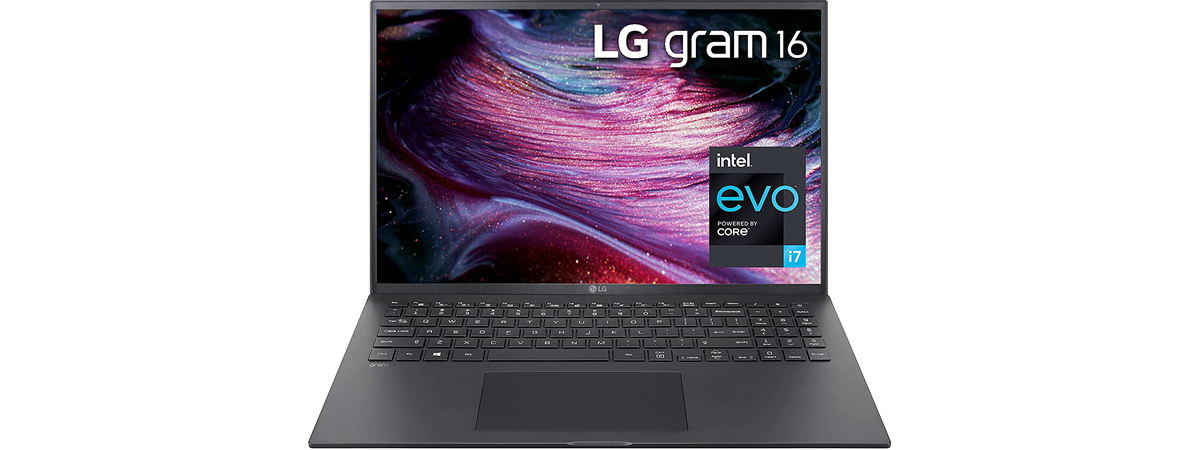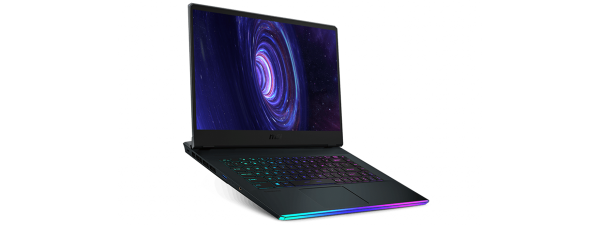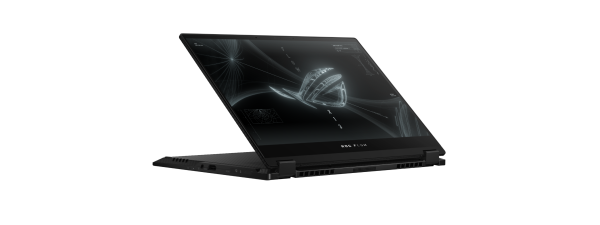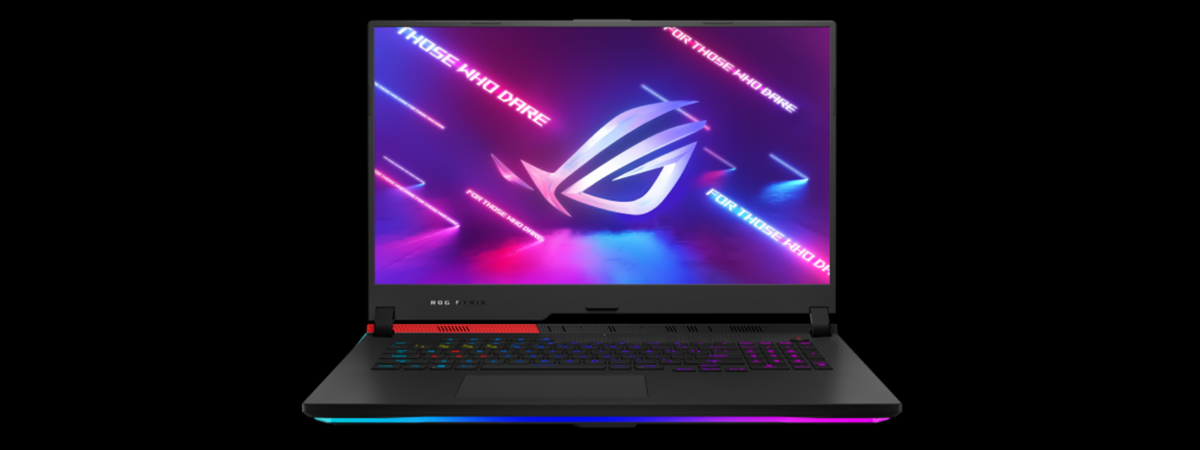
Using the ASUS ROG Strix G17 G713QC
The ASUS ROG Strix G17 G713QC is a laptop equipped with powerful hardware. Although it’s a gaming laptop, I also use it for work. That consists mostly of researching the internet with dozens of open tabs for finding ideas and information for our next tutorials, articles, and reviews. I also use the laptop for writing and editing the stuff we, at Digital Citizen, write. For everything regarding working with Microsoft Word, Excel, Excel, running virtual machines, and so on, I can say that this notebook performs great, and it’s never lagging or feeling slow.
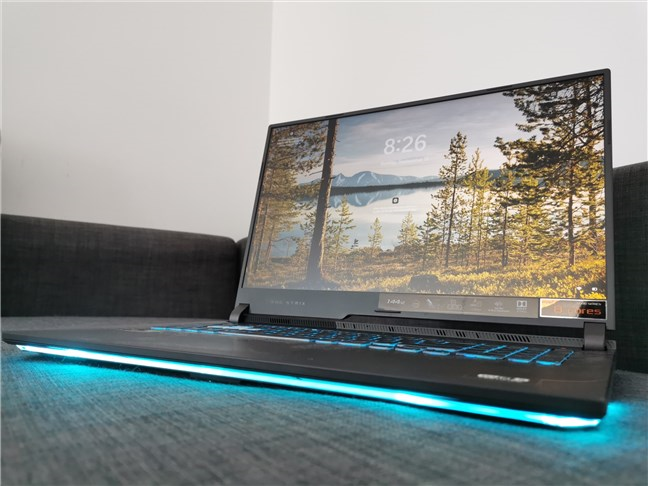
A look at the ASUS ROG Strix G17 G713QC
As for gaming, my experience with the ASUS ROG Strix G17 G713QC was good and, if I also take its price into consideration, I could actually say great! Among the games I played and still play, I count Metro Exodus, Shadow of the Tomb Raider, Assassin’s Creed Valhalla, and League of Legends. The first three run well using medium to high graphics settings, while the latter is too easy for what this laptop can do. 🙂 You’ll find more details on the gaming experience in the benchmarks section of this review.
The keyboard on the ASUS ROG Strix G17 G713 series is excellent. It uses rubber dome keys, and it’s RGB-illuminated. I found it very comfortable to type on, which is something that obviously matters greatly for me. It doesn’t bend and feels solid overall. The keys look great with their large characters, and the lighting effects are independently customizable for each key. Furthermore, the WASD keycaps are semitransparent and have a different texture that makes it easier to find them while gaming.
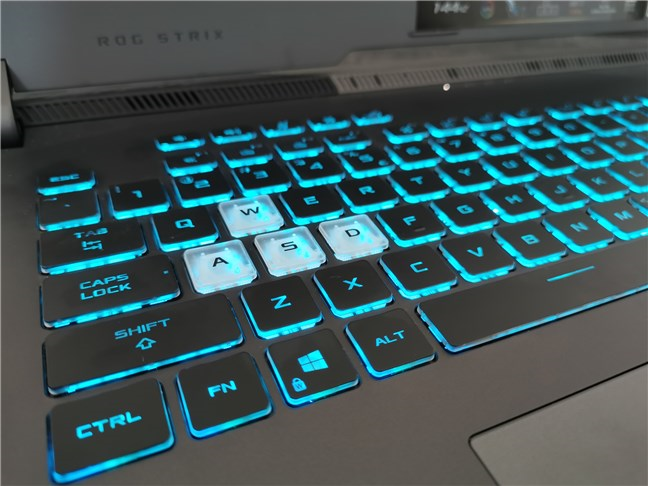
The keyboard on the ASUS ROG Strix G17 G713QC
The only quirk I don’t like about the keyboard is the fact that the Numpad is not very well delimited from the standard keys. One of the unwanted things that made me do repeatedly was press the F12 key instead of Delete, which proved to be quite annoying when writing.
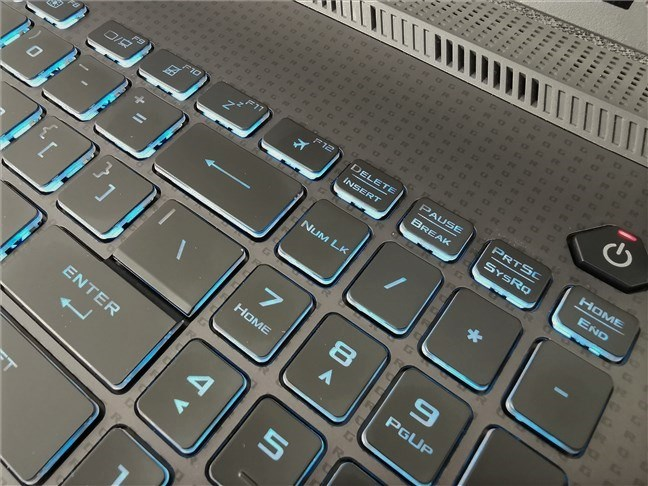
Numpad is too close to the standard keys
The touchpad is large and responsive, and its surface feels soft, which is nice. The left and right touchpad buttons are built-in, but pressing them gives you a satisfying feedback.
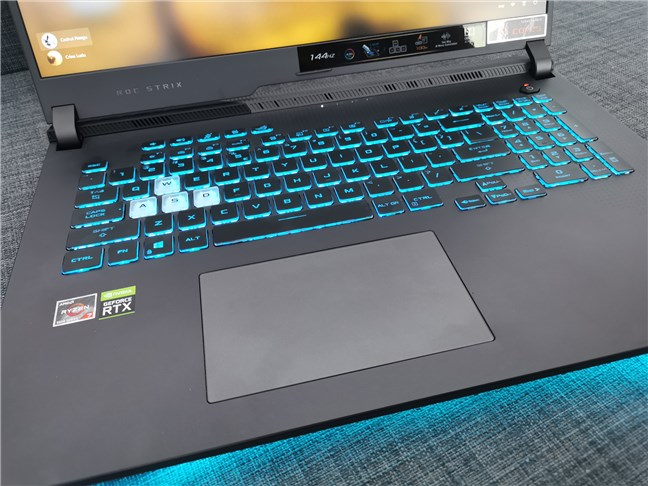
The large trackpad found on this gaming laptop
Gaming laptops usually have problems with dissipating heat, and many of them tend to get parts of the keyboard or touchpad too hot to be comfortable placing your hands on them. The good news is that the ASUS ROG Strix G17 G713QC is not one of those troublesome models. Its cooling system gets the heat out through its back and sides, and neither the keyboard nor the touchpad gets too warm.
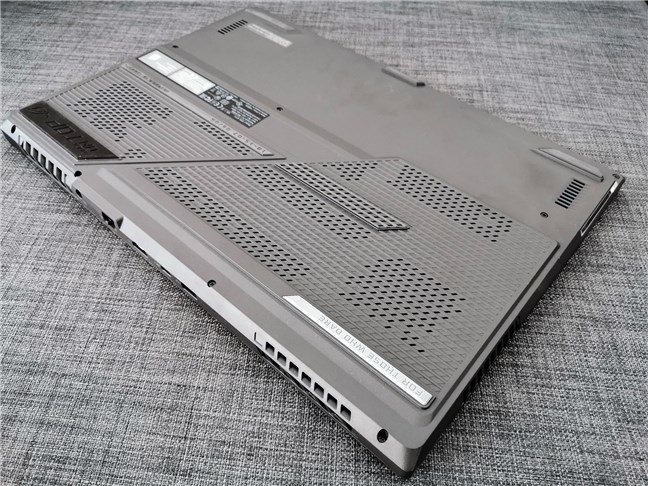
The cooling system of the ASUS ROG G17 G713
As for the audio quality, things could be better, to be honest. If you’re using headphones, it’s great, but the built-in speakers are relatively weak. They don’t sound bad, but the maximum sound level is less than what you’d expect.
Using the ASUS ROG Strix G17 G713QC is a pleasant experience. It’s fast and powerful, and the keyboard is actually good for typing. It also doesn’t get hot, and, at least in productivity tasks, it’s very silent.
Performance in benchmarks
To get a better and more accurate idea about how fast this gaming laptop is, we ran several benchmarks. Furthermore, we ran all of them on Windows 11 Pro, which we decided would be best, as it will soon be available for everyone and promises to be faster than Windows 10.
First, we used BootRacer to measure how much time the laptop needs to start. We found that the ASUS ROG Strix G17 G713QC usually boots in about 34 seconds, which is a good result.
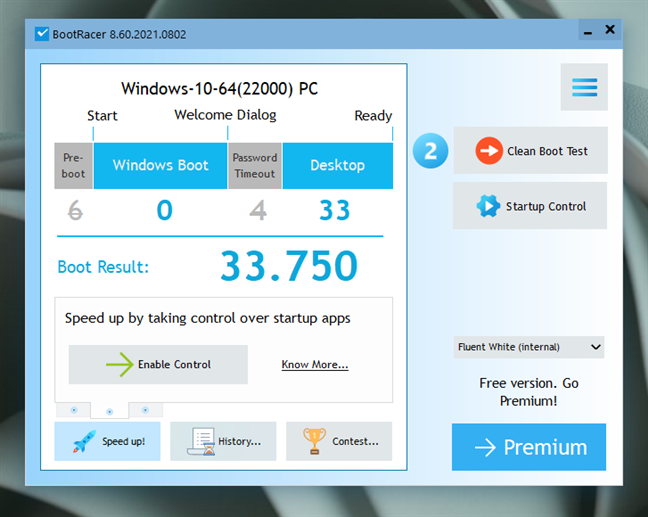
Boot time in Windows 11
Next, we tested the 512GB M.2 NVMe Samsung SSD used by our ASUS ROG Strix G17 G713QC. For that, we used CrystalDiskMark, and, as you can see below, both the reading and writing speeds are excellent.
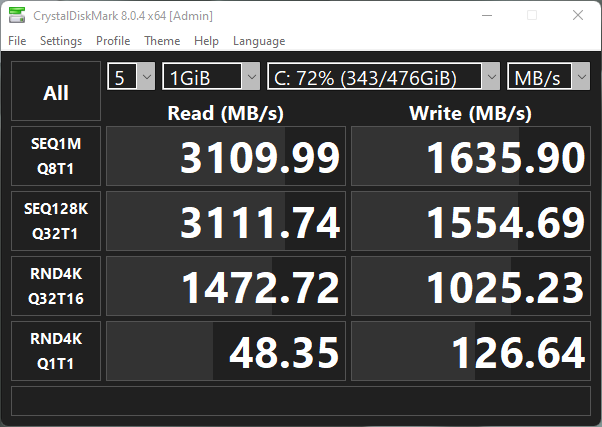
CrystalDiskMark: SSD benchmark results
Before the gaming benchmarks, we checked how the laptop fares in everyday productivity tasks using PCMark 10. This app evaluates performance when working with Office apps, videoconferencing, browsing the internet, and creating digital content. As expected, we obtained a high score of 5766 points.
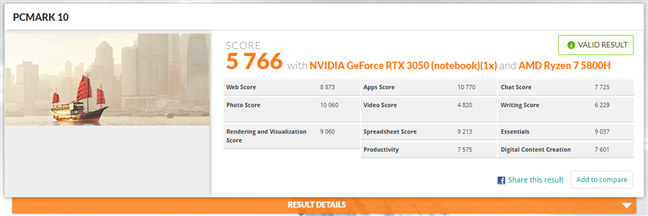
Benchmark results in PCMark 10
Next came the gaming benchmarks, starting with 3DMark's Time Spy Extreme, in which we got a score of 2689 points. That means this laptop offers a similar performance to a notebook equipped with an Nvidia RTX 2060 graphics card.
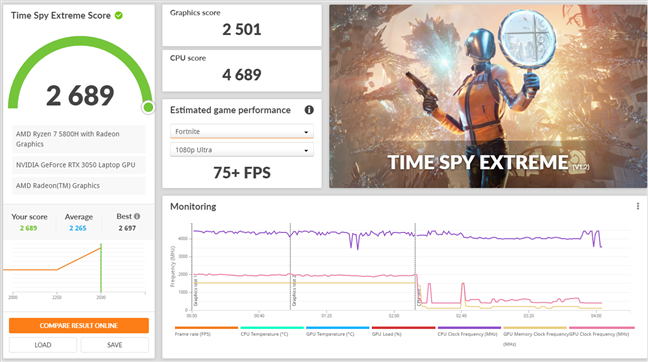
Benchmark results in 3DMark Time Spy Extreme
In 3DMark's regular Time Spy benchmark, ASUS ROG Strix G17 G713QC had a score of 5811 points. It's a better score than 43% of all the computers and laptops ranked by 3DMark.
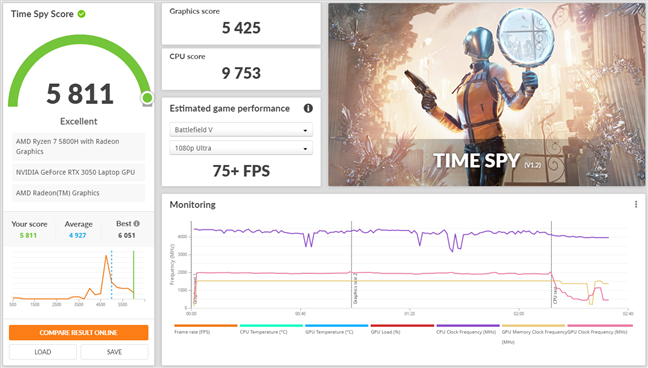
Benchmark results in 3DMark Time Spy
The third test we ran was 3DMark’s Port Royal, which measures the graphics performance for ray tracing effects. ASUS ROG Strix G17 G713QC got a score of 583 points. It’s a very low score for ray tracing and has to do with the small amount of graphics memory and bus width of the Nvidia GeForce RTX 3050 GPU (only 4GB and 128-bit bus width). Still, being an RTX card, it means that it also supports DLSS, which is the next thing we tested.
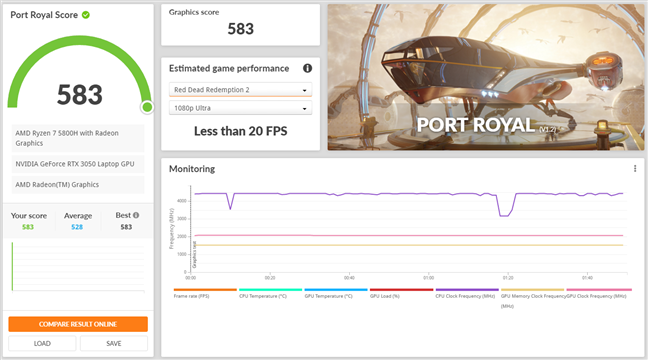
Benchmark results in 3DMark Port Royale (Ray Tracing)
In 3DMark’s Nvidia DLSS feature test, this notebook rendered an average of only 4.4 frames per second with DLSS off. Turning DLSS on and using its Performance setting, it managed to achieve 54.24 frames per second. That’s quite an impressive change, wouldn’t you say so?
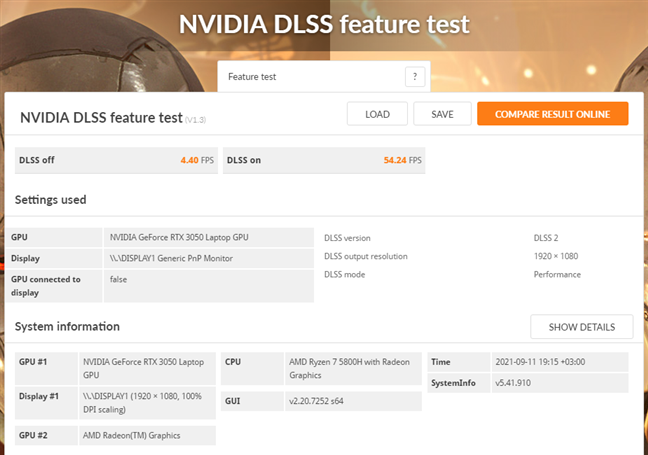
Benchmark results in 3DMark Nvidia DLSS
To see whether the ASUS ROG Strix G17 G713QC can run VR (Virtual Reality) apps, we used the Unigine’s SuperPosition VR Maximum benchmark. The laptop managed to achieve a score of 6059 points, which is a good result, showing that it can render VR at medium to high graphics quality.
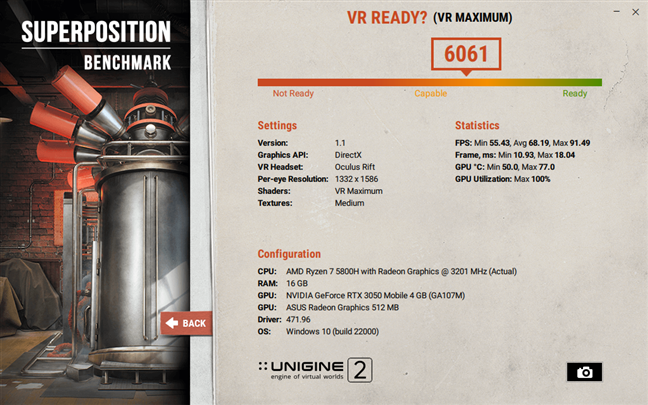
Benchmark results in Unigine SuperPosition VR
We also ran a few benchmarks in games: Shadow of the Tomb Raider, Metro Exodus, and Assassin’s Creed Valhalla. All the benchmarks were run in Full HD (1920 x 1080) resolution, but we set the graphics settings differently for each one, depending on what we needed to get as close to 60 frames per second.
In Shadow of the Tomb Raider, with DirectX 12, the Highest graphics quality, and DLSS (Performance), we got excellent results: a minimum frame rate of 54, an average of 65, and a maximum of 97 fps.
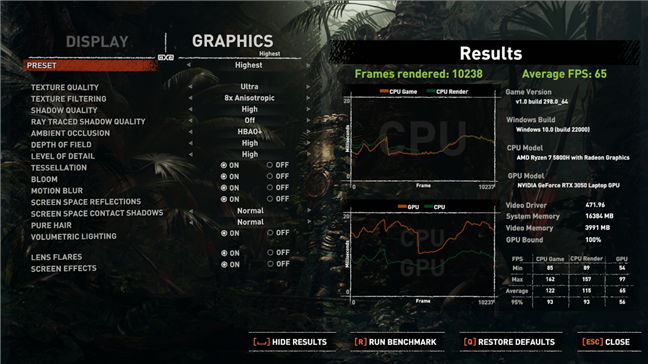
Benchmark results in Shadow of the Tomb Raider
In Metro Exodus, we used the High preset with Ray Trace set to Normal and DLSS set on Performance. We got a minimum of 29 frames per second, an average of 58 fps, and a maximum of 88. These are good results.
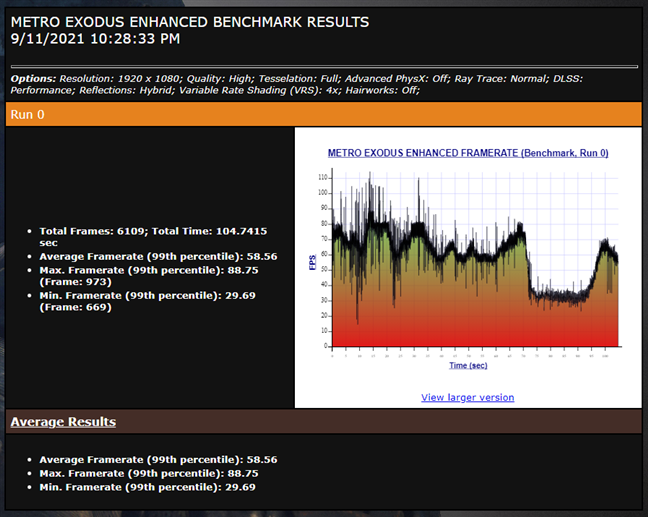
Benchmark results in Metro Exodus
For Assassin’s Creed Valhalla, we had to use the Medium graphics settings, as the Nvidia GeForce RTX 3050 GPU doesn’t have enough memory for more than that. Also, this game doesn’t support ray tracing or DLSS. We got a minimum frame rate of 36, an average of 65 fps, and a maximum of 92 frames per second. We consider these results to be satisfactory for a gaming laptop in this price range.
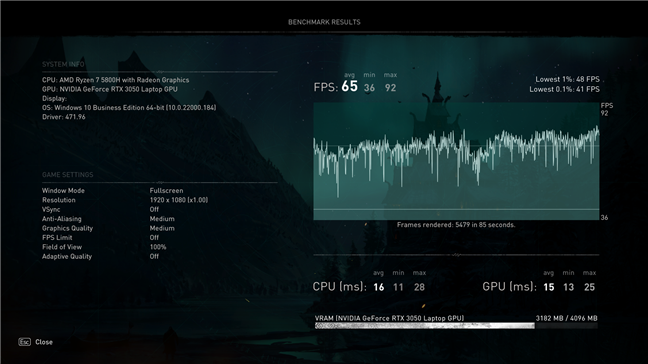
Benchmark results in Assassin's Creed Valhalla
Next, we wanted to evaluate the laptop’s cooling system, which we did, using FurMark's benchmark. The graphics card reached a maximum temperature of 170 degrees Fahrenheit (77 degrees Celsius). It's a low temperature for a laptop GPU, and that’s a good thing!
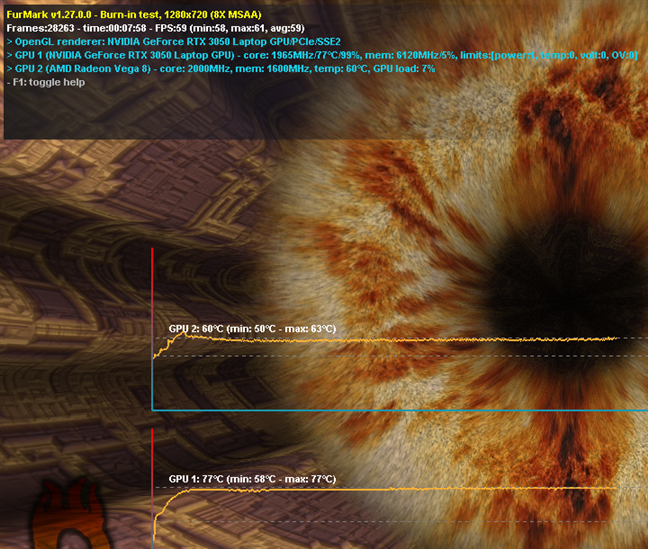
GPU temperatures measured with Furmark
Finally, we also ran PCMark 10 to check the laptop's battery life. While running everyday home computing tasks such as writing, web browsing, and video conferencing tasks, the ASUS ROG Strix G17 G713QC managed to keep on going for 4 hours and 2 minutes. It's a good result, although a 6-cell instead of a 4-cell battery would have been even better. 🙂

ASUS ROG Strix G17 G713QC: Battery life when doing Office work
As this is a gaming laptop, we also used PCMark 10’s Gaming tests, which evaluates the battery life under heavy load. This is useful if you want to know how long the battery can last you when playing games. The ASUS ROG Strix G17 G713QC managed to keep on going for an hour and 5 minutes. It’s not so much, but it’s enough for one or two League of Legends matches. 🙂

ASUS ROG Strix G17 G713QC: Battery life when playing games
The benchmarks we ran show that the ASUS ROG Strix G17 G713QC is a good gaming laptop. In productivity tasks, it aces everything. For gaming purposes, you know now that it can run any game at medium to high graphics quality. The processor is excellent, and Nvidia’s GeForce RTX 3050, although it can be tagged as average, compensates by offering support for the DLSS technology, which improves framerates in many games.
Apps bundled with the ASUS ROG Strix G17 G713 series
The ASUS ROG Strix G17 G713 series comes with a surprisingly short list of bundled apps:
- MyASUS, which you can use to register your laptop, diagnose problems, contact customer support, link your laptop to your smartphone, manage how the laptop’s battery is charged, etc.
- Armoury Crate, which gives you details and allows you to configure your laptop’s hardware, adjust its performance modes, manage RGB lighting effects, create game scenarios, and so on.
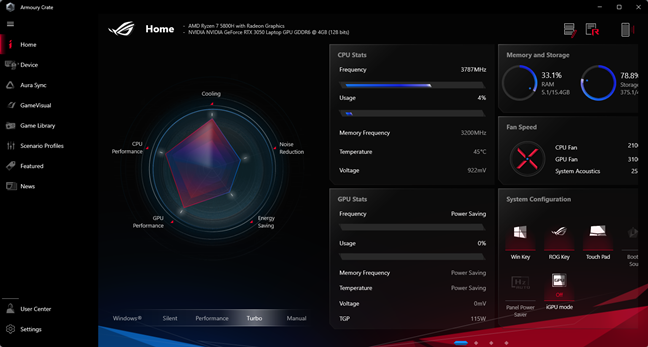
ASUS Armoury Crate
ASUS bundles no bloatware on the ROG Strix G17 G713. We love this approach, and we’re sure most people will do too.
What do you think about the ASUS ROG Strix G17 G713?
Now you know what we like and do not like about the ASUS ROG Strix G17 G713 series and the ASUS ROG Strix G17 G713QC model in particular. Before you close this review, let us know in the comments section your opinion about this gaming laptop and whether you would buy it.


 16.09.2021
16.09.2021 